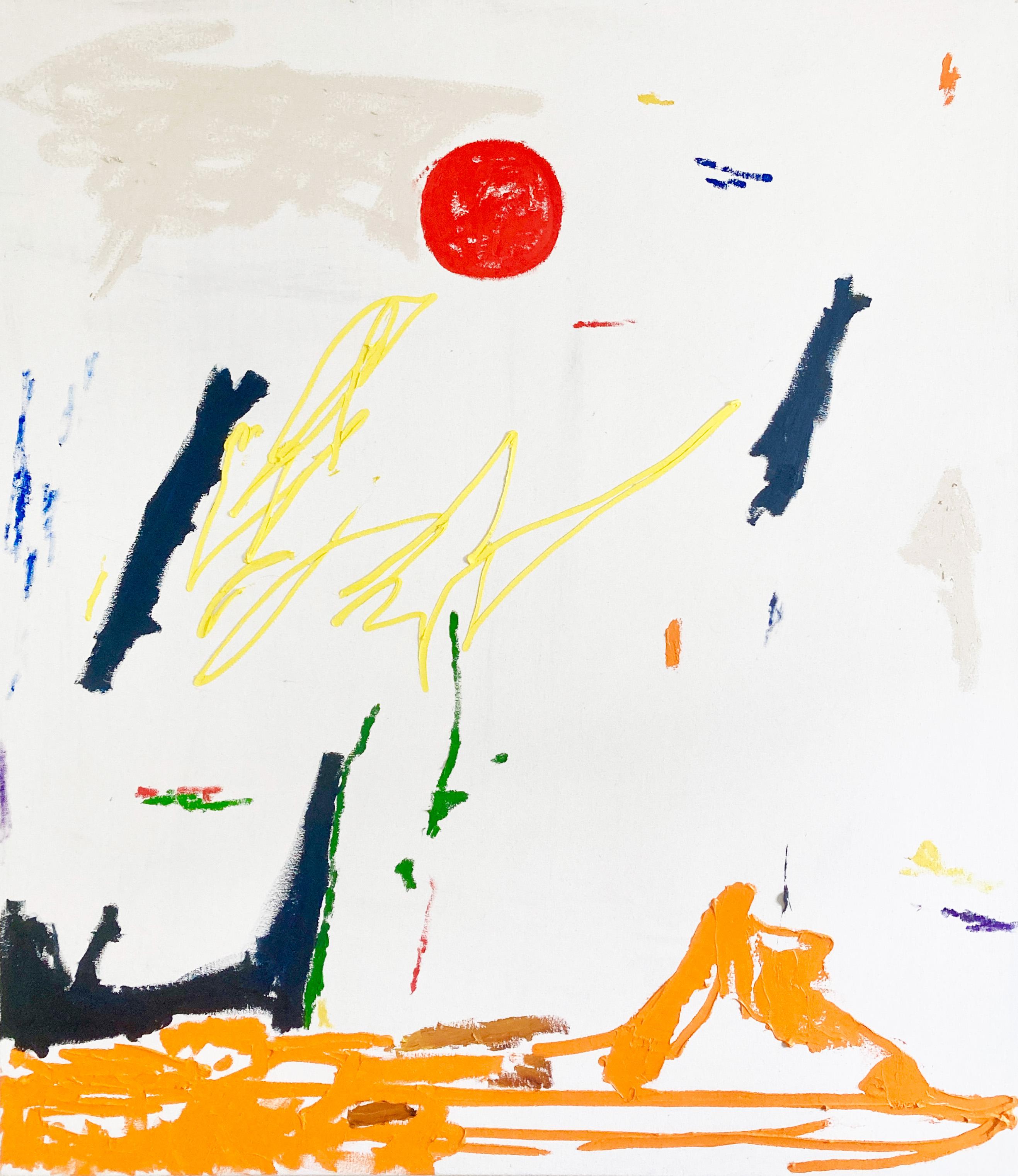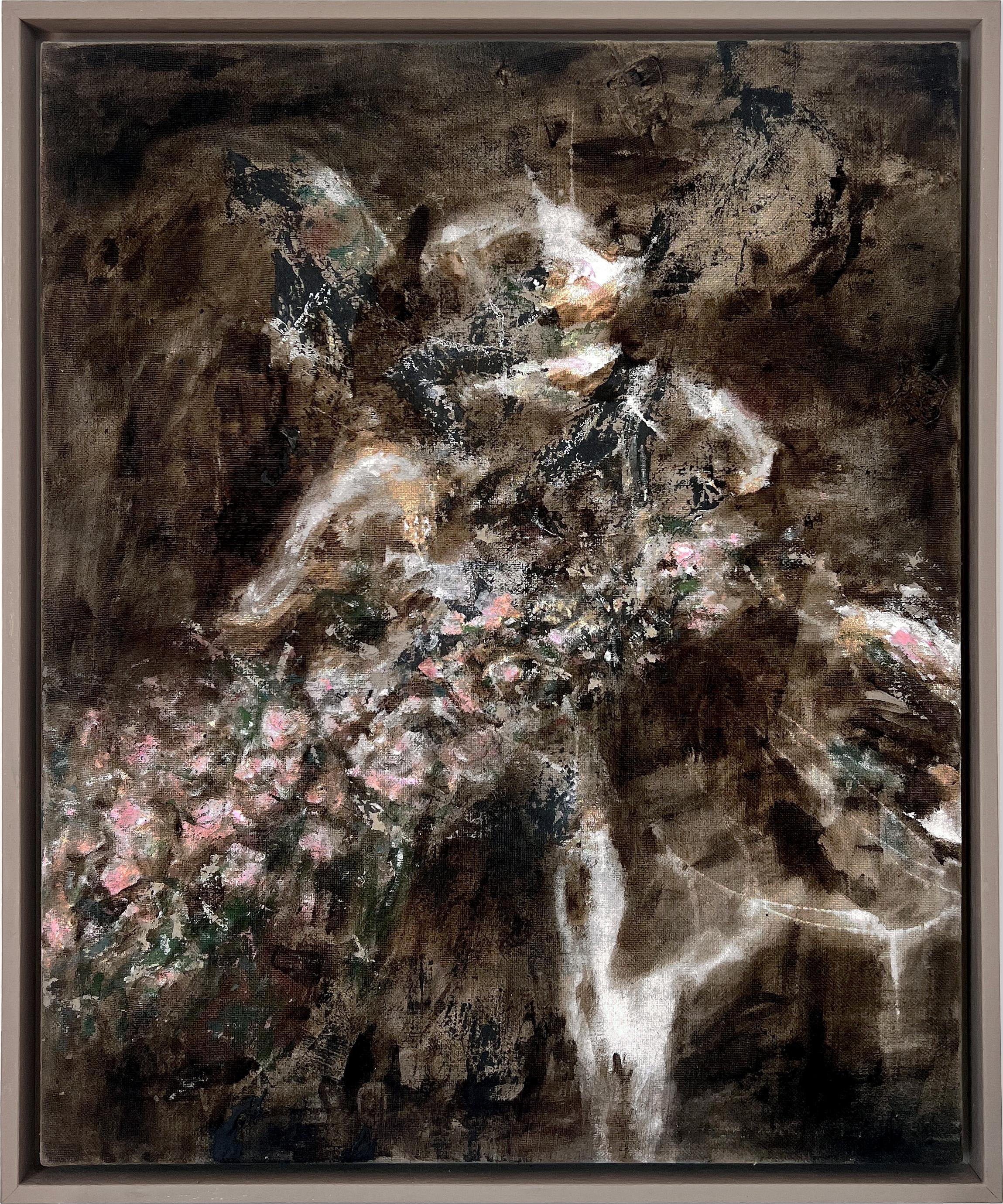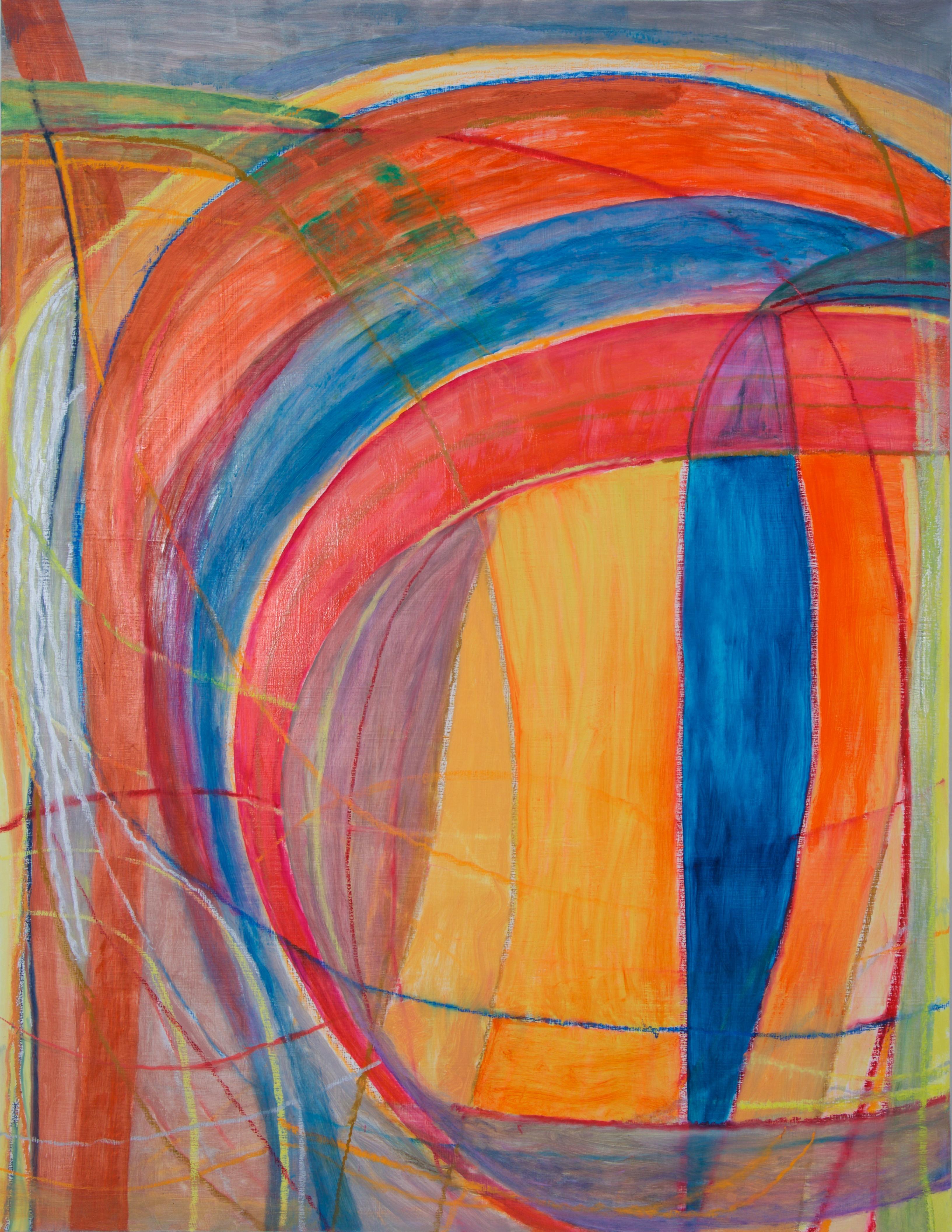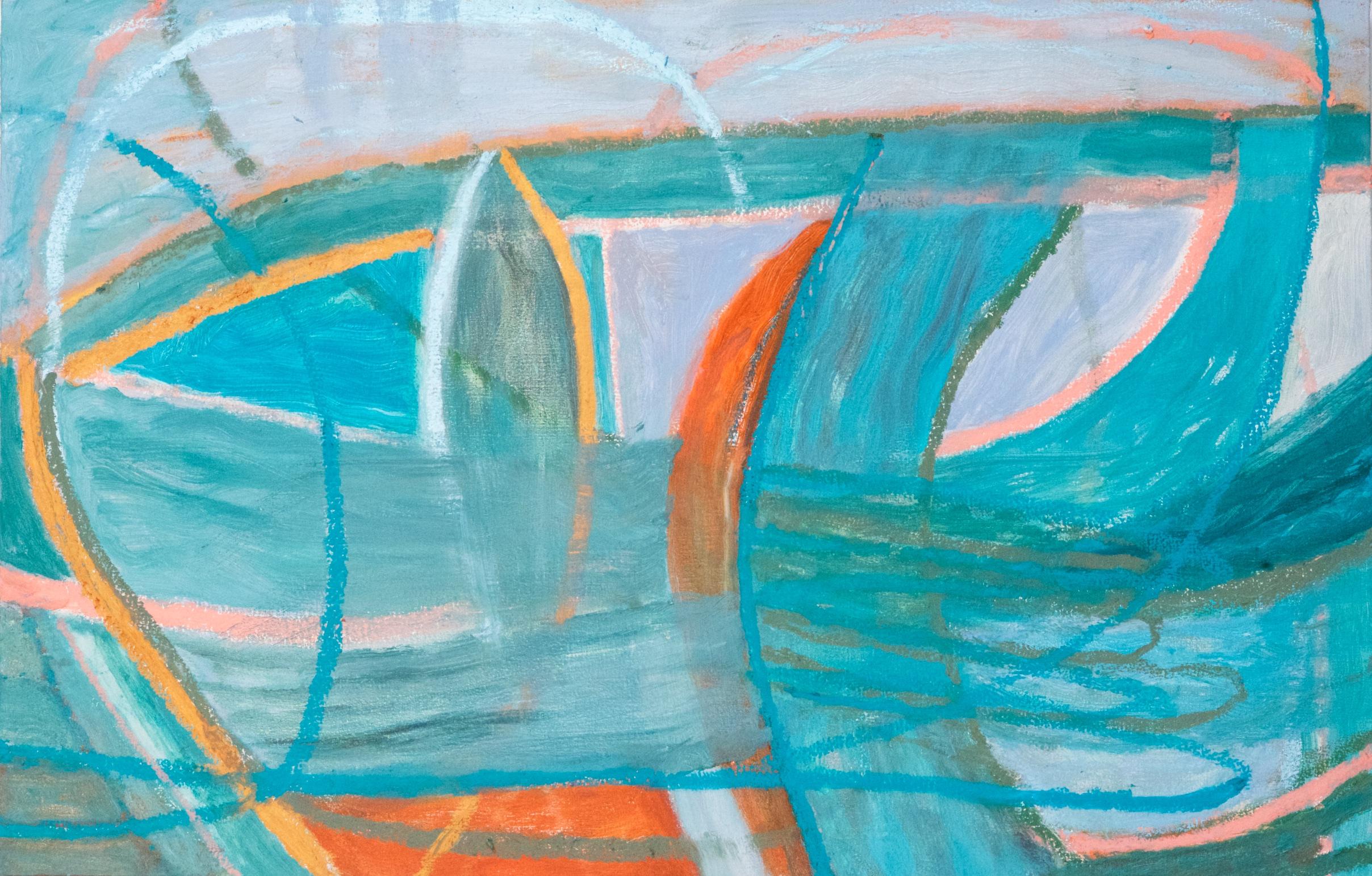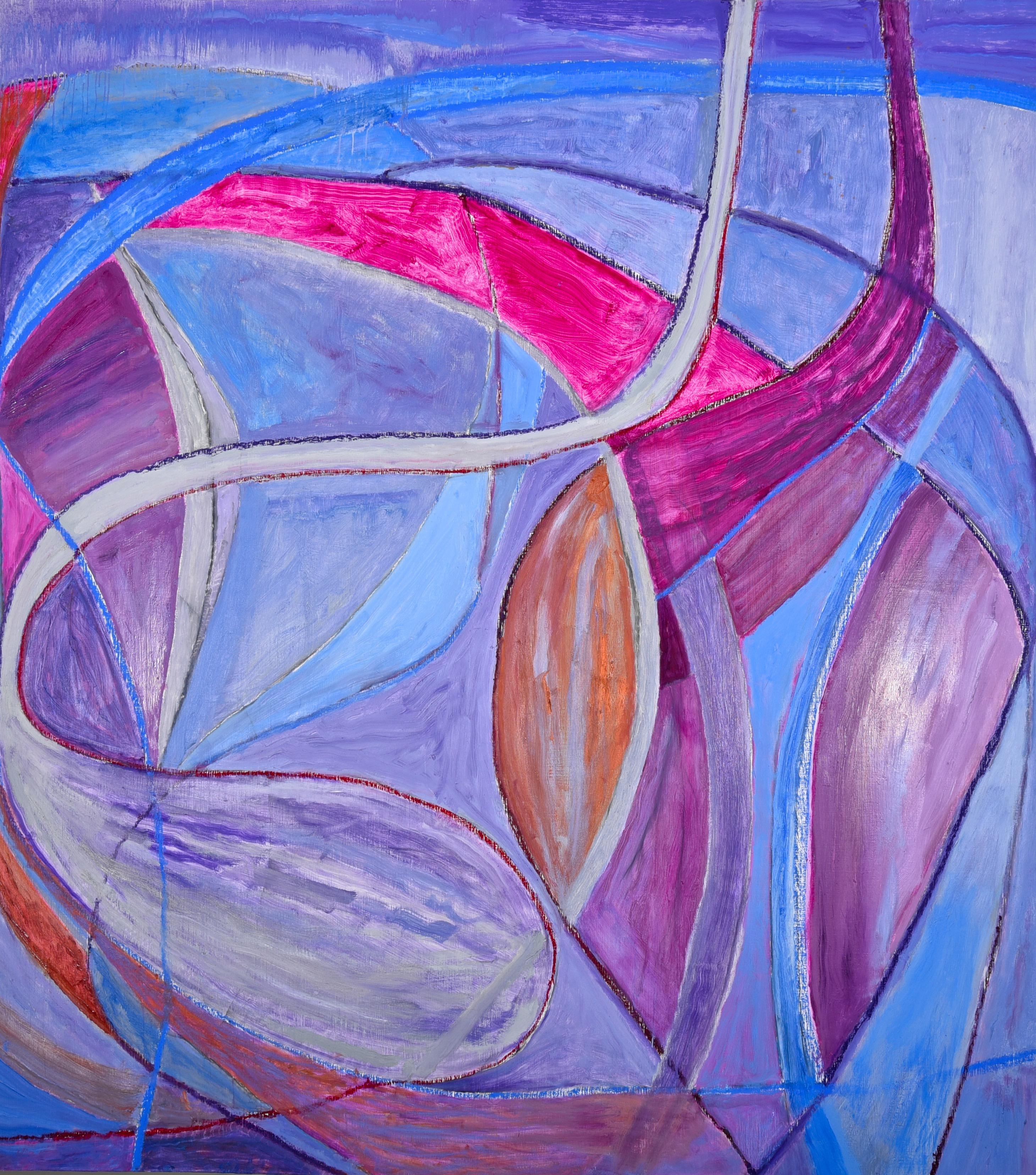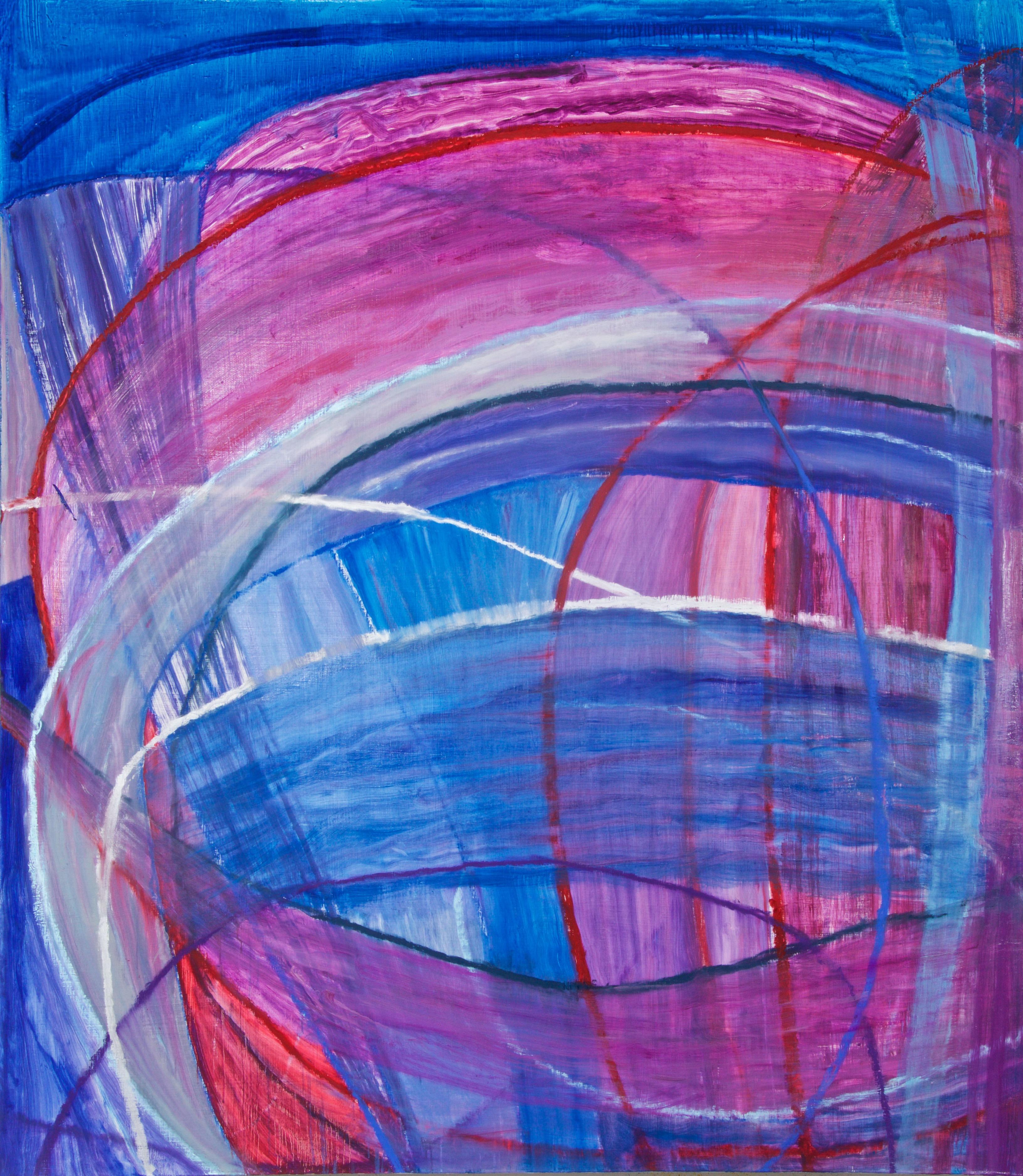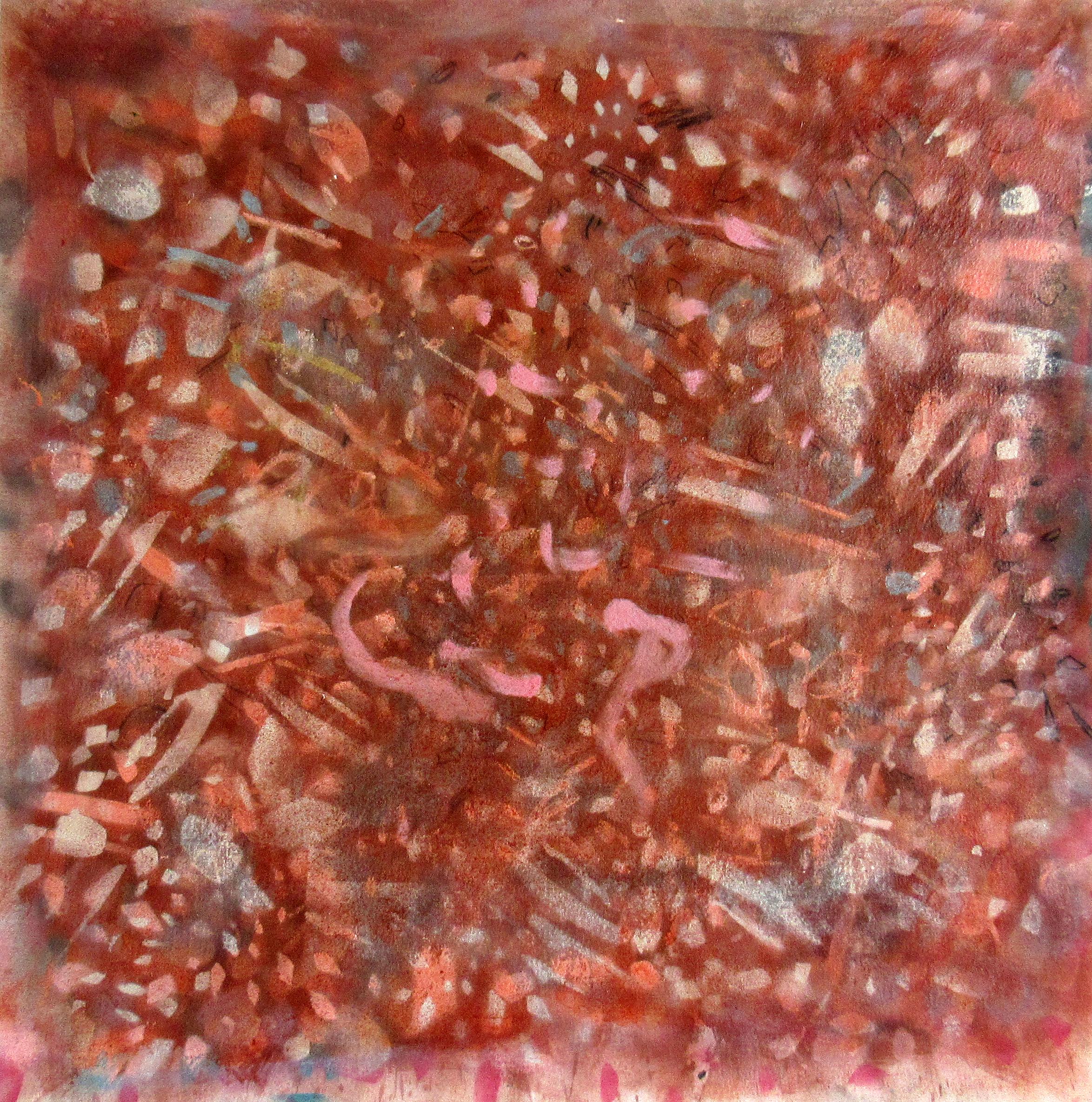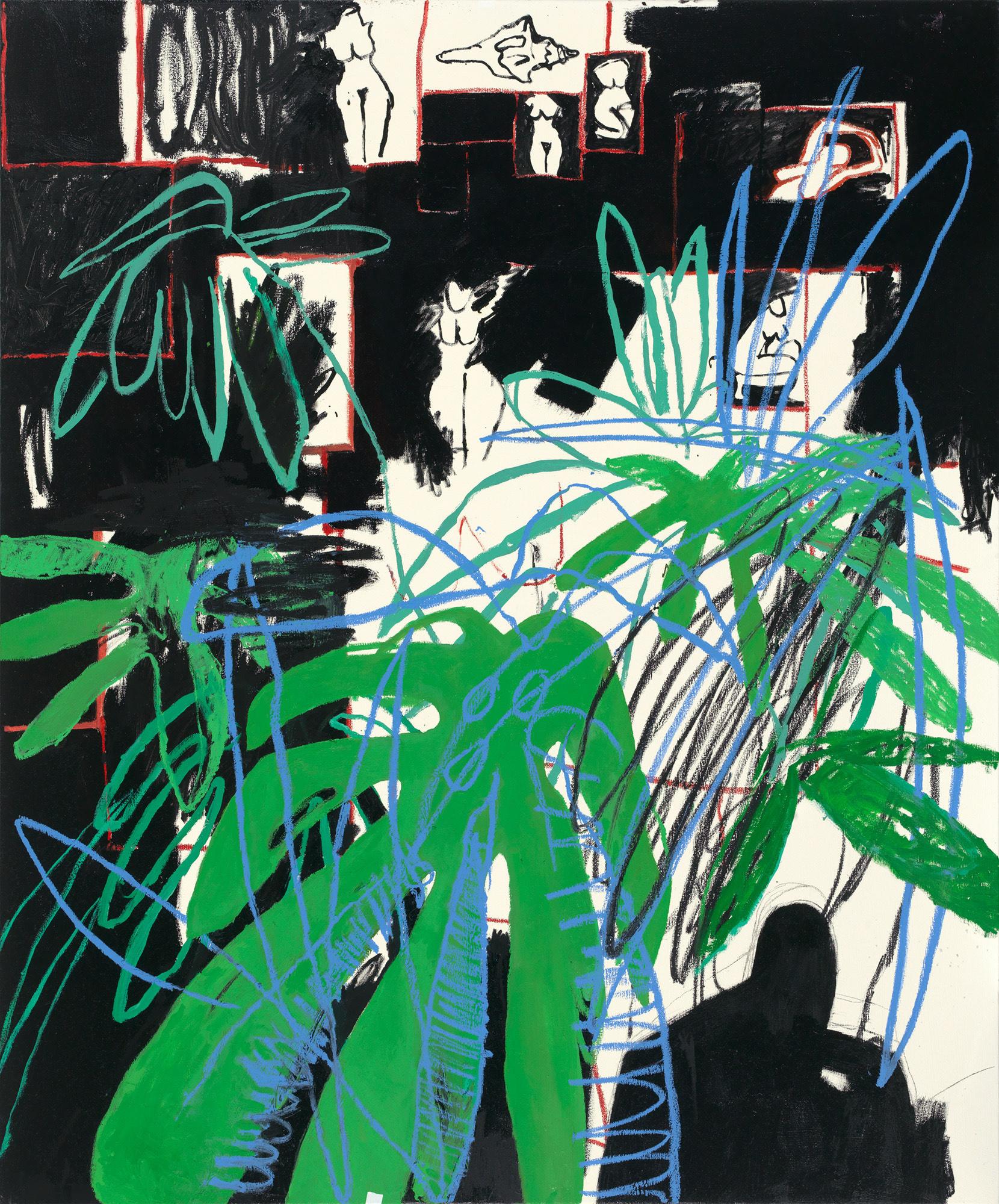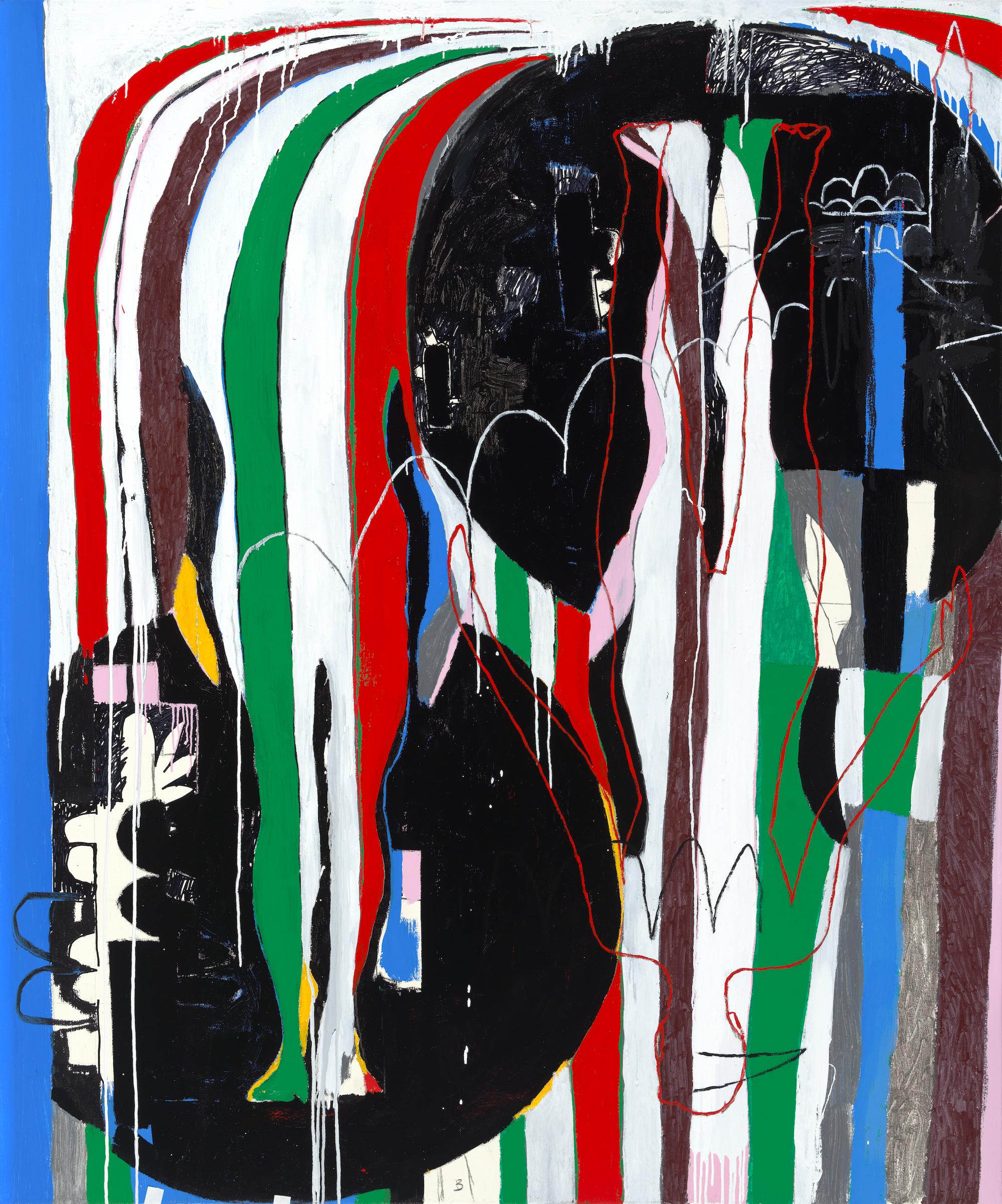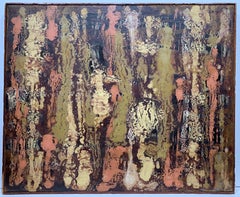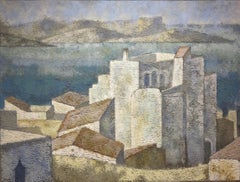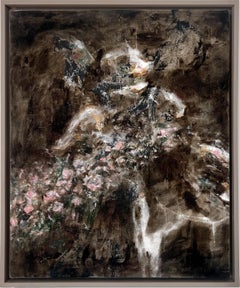Frances Faye In Frenzy
View Similar Items
Want more images or videos?
Request additional images or videos from the seller
1 of 10
Karl WirsumFrances Faye In Frenzy1961
1961
About the Item
- Creator:Karl Wirsum (1939, American)
- Creation Year:1961
- Dimensions:Height: 19 in (48.26 cm)Width: 25 in (63.5 cm)Depth: 2 in (5.08 cm)
- Medium:
- Movement & Style:
- Period:
- Condition:
- Gallery Location:Wilton Manors, FL
- Reference Number:1stDibs: LU2452734082
About the Seller
4.9
Vetted Seller
These experienced sellers undergo a comprehensive evaluation by our team of in-house experts.
Established in 2007
1stDibs seller since 2015
322 sales on 1stDibs
Typical response time: 3 hours
More From This SellerView All
- Abstract Expressionist mi-century modern paintingLocated in Wilton Manors, FLBeautiful mid-century Abstract Expressionist color field painting. Oil on canvas, 16 x 20 inches; 16.5 x 20.5 inches in simple vintage wood strip frame original to the piece. Signed ...Category
Mid-20th Century Abstract Expressionist Abstract Paintings
MaterialsCanvas, Oil
$780 Sale Price35% Off - Fisherman at DuskBy Oskar D'AmicoLocated in Wilton Manors, FLOskar D'Amico (1923-2003). Fisherman at Dusk, c.1960. Oil on linen canvas, 16 x 30 inches; 18 x 32 inches (frame). Signed lower right. Excellent condition with no damage or conservation. Biography: Oskar Maria D'Amico (February 22, 1923 – May 3, 2003) was an active Italian artist in Rome, Naples, Lanciano, Cisterna, Milan, Gallarate, Torino, Zagabria, Paris, Toulouse, Melun, Carenac, Maubeuge, Madrid, Barcelona, Zaragoza, Budapest, Győr, Mexico City, Cuernavaca, Morelia, Toronto, New York City, Philadelphia, Los Angeles, San Francisco, Miami, Denver, Santa Fe, Albuquerque and Socorro, between 1943 and 2003. He is considered a Nomad artist because of his ability to work in various styles. He had three major periods in his artistic life: Figurative, Materic and Geometric. [1]He also was an outstanding art director for more than 75 epic movies. D'Amico had a very outgoing personality. He was a non-conformist, which was reflected in his work throughout his life. D'Amico was born in CastelFrentano, Italy, a small village in Abruzzo. At a young age, he felt he had to leave and dive into the big world. After being a seminarist with the Salesiani during World War II, he left Naples, where he studied architecture, and began a great adventure in Rome. He specialized at the time in decorating nightclubs and bars, and invented a special type of double ceiling to hide the lights. D'Amico, who was self-taught as a teenager in drawing and painting, burst onto the filmmaking scene in Rome when an art director asked him to do a perspective of a set design. Soon other moviemakers were calling him.[2] D'Amico was an art director on 75 films including two by Orson Welles. D’Amico was able to create a real marble floor in the set of the palace of the King Saul, in "David and Goliath" directed by Orson Welles. Art directors previously painted a simulated marble on top of concrete due to the cost of the real thing. D'Amico became an associate of Jadran Films in ex-Yugoslavia, which specialized in Roman and Egyptian constructions. While an art director, he never stopped painting. His faceless clowns, reflecting the people who had no identity after World War II, were a big success. In the early 1960s, D'Amico moved with his family to Toronto, Canada, another place he felt was too small. He left for Philadelphia and New York City, which affected his work. He turned his focus to abstract, and for more than a decade created abstract Expressionist paintings "on the plane of all matter" that he called "Materic". The Materic style, which he invented, was done in several media and could not be changed once on the canvas. The paintings were very well received. D’Amico sold more than 400 in Philadelphia and New York City. Unfortunately he had to stop doing the Materics because the colors he used were harmful to his liver. In the mid 1970s, he returned to his architectural roots and developed a new vision for Abstract Constructivism using just acrylic colors. Presented in Paris by his French Art dealer, Francoise Tournier, at the Grand Palais de Paris, and in Mexico City, D'Amico's interpretation of the "New Geometry" was widely admired. In 1983, when he presented the work at the Bodley Gallery, people whispered that he had the potential to be the new Picasso because of his eclecticism and the Nomad nature of his styles. In 1987, D'Amico abandoned the gypsy life and settled in New Mexico. Albuquerque was the perfect place to dedicate himself 100 percent to his work.[3] There were no distractions and a good climate that reminded him of his beloved Cuernavaca in Mexico. Staying in close contact with his French art dealer Tournier, D’Amico had several shows in Denver at the Helen Karsh Gallery and in Albuquerque at the Black Swan and Café Galleries. At least once a year, D’Amico went to Europe to immerse himself in the antique world and visit museums and galleries. In 1992, visiting Tournier at the Castle of Saint Cirq Lapopie, he met the man who founded the MADI movement in 1940, Carmelo Arden Quin...Category
1960s Abstract Figurative Paintings
MaterialsCanvas, Oil
$1,000 Sale Price50% Off - Casas de Ibiza (Ibiza Spain Landscape)By Enrique ClimentLocated in Wilton Manors, FLEnrique Climent (1897-1980). Casas de Ibiza, c.1960. Oil and sand on canvas, 35 x 46 inches; 44.5 x 55.5 inches (frame). Signed lower left. Excellent condition with no damage or conservation. Instituo National de Bellas Artes lebel affixed en verso. Biography: Enrique Climent ( Valencia , Spain, 1897- Mexico City , 1980) was a Spanish painter and graphic designer, present in the Spanish Pavilion of the International Exhibition of Paris in 1937 , two of whose works are conserved in the National Museum Art Center Reina Sofía , as part of the collection of the Spanish Museum of Contemporary Art (MEAC). Exiled in Mexico , country in which he died at 83 years of age. He has been associated with the driving group in Spain of the "New Art". Born in a bourgeois family of the Valencian capital, despite paternal opposition, Climent studied at the School of Fine Arts of San Carlos , and with a scholarship received in 1919, traveled to Madrid to complete them in San Fernando . In the capital of Spain he participated in the gathering of Ramón Gómez de la Serna , for whom he illustrated some greguerías , and in the avant-garde activities of the then-called first Escuela de Vallecas , Associated with the Society of Iberian Artists . He also collaborated as an illustrator of Blanco y Negro magazine, 3 and illustrated books by Elena Fortún , Azorín , Juan Manuel Díaz Caneja and Manuel Abril . 3 Before, in 1924 he had been in Paris for two years, where he came to design some stage sets for opera shows. 6 He participated in three of the exhibitions of "Los Ibéricos" (San Sebastián in 1931, Copenhagen in 1932 and Berlin in 1933), as well as in the International Exhibitions of Contemporary Spanish Art in Paris and Venice in 1936. He was one of the Spanish exiles who in 1939 landed in Veracruz , after the crossing of the Sinaia , along with other intellectuals and artists (such as José Moreno Villa , Arturo Souto...Category
Mid-20th Century Abstract Landscape Paintings
MaterialsCanvas, Oil
$15,000 Sale Price25% Off - Industrial CompositionBy Murray HantmanLocated in Wilton Manors, FLMurray Hantman (1904-1999). Industrial Composition, c.1948-50. Oil on canvas measures 18 x 24 inches, 19 x 25 inches in original simple wood strip frame. Signed lower right. Excellent condition with no conservation. Exhibition label affixed en verso. Provenance: estate of Murray Hantman. This piece was included in the exhibition Murray Hantman: From Image to Abstraction, Portland Museum of Art, 2005. Anonymous lender. Biography: Shaped by his life experiences and a commitment to the practice of making art, the work of Murray Hantman represents a career of personal exploration and aesthetic refinement that took him from New York, to Los Angeles, back to New York and eventually to the serene, yet dramatic, coast of Maine where he worked as part of the artists’ colony on Monhegan Island. Born in Pennsylvania in 1904, Hantman’s family moved many times to follow his father’s business opportunities, eventually settling in New York. A childhood of economic instability and dislocation formed Hantman’s early years, making him independent and self-reliant from a very early age. Hantman’s father owned movie theatres and photography studios and, recognizing his son’s artistic ability, employed him to print and hand-color photographs as a child. When he was eleven and living in Michigan, a public school teacher arranged for Hantman to receive a scholarship to the Detroit Museum of Art School where after a year he was awarded another scholarship to study at the Detroit School of Design. He studied in Detroit for a year until his family abruptly moved to Alabama, interrupting his artistic and academic studies until the family moved to New York at the end of the first World War. As a young man, Hantman supported himself by working many different jobs in New York and New Jersey. Steady work with his brother at the Hartford and New Haven Railroad office in New York City finally allowed Hantman to pursue his artistic studies in a formal way. In 1928, he enrolled in the Art Students League and became part of a social circle of artists and activists. While at the Art Students League, Hantman worked with faculty members Boardman Robinson and Thomas Hart Benton on two mural projects. During the years around the Great Depression, Hantman worked in Los Angeles with a group of artists known as the Bloc of Painters. Recruited through an advertisement to attend a course on fresco painting, the Bloc group was headed by Mexican muralist David Alfaro Siqueiros who had recently been exiled from Mexico for political activism. Through his work with Siqueiros, Hantman became motivated by social and political issues and their creative expression. In 1934, Hantman returned to New York and found the community of artists there equally engaged in social justice issues. While enrolling at the newly-formed Artists’ Union to advocate for the labor rights of creative workers, Hantman met sculptor Jo Levy who would become his wife. Like many artists at the time, Hantman found work through the Federal Art Project as a member of the Easel Painting Division which strove to create “works of art for the public which have a definite social value to the community”. (1) Along with the work he exhibited as a member of the WPA group, Hantman’s personal work from this period was in the style of Social Realism he learned from Siqueiros. Hantman and his wife, Jo Levy, believed in creating art for the public good. Their Artists’ Union friends and colleagues from the Federal Art Project formed the nucleus of their social circle and would become the community of artists who worked together during summers on Monhegan Island off the coast of Maine. In 1945, Hantman had his first solo painting show at Marquie Gallery in New York, and visits Monhegan Island for the first time. The following summer, he and Levy spend the summer in Maine, and would continue to do so for the next thirty years. The landscapes and seascapes of Maine would become a central subject in his work after 1946. The dramatic coastline of Monhegan Island had been inspiration for other New York artists before Hantman, including George Bellows and Rockwell Kent. As Hantman matured as an artist he began to reject academic narrative in his work, moving towards a more expressionistic and abstract style. During this shift into abstraction, nature remained central to his work and the seascape and Maine light provided continual inspiration. In the late 1940s, Hantman begins to reduce the landscape into elemental forms of color and shape. As he pursues this mode of painting his work moves further into abstraction, juxtaposing large blocks of saturated color to convey the drama of sea and sky. Always a student and teacher, Hantman distilled the ideologies of Abstract Expressionism and synthesized its concepts into his own work. Throughout the 1950s, he experimented with Action Painting, color, form and expression. By the late 1950s, Hantman’s mature style had developed into abstract works of pure color masses in simple geometric forms. His mastery of color and form continued into his late work, always reflecting the beauty of the natural world around him. Dedicated to the idea of exploration in his art, Hantman made hundreds of small color and form studies that hint at the large-scale works that would follow in the late 1960s and beyond. Hantman’s work from the ‘70s and ‘80s shows even more intensity of color and distillation of composition. The landscape of the Maine coast remained his muse throughout, the stark lines suggesting the flat plane of sea and horizon line beyond. Hantman and Jo Levy lived in New York and summered on Monhegan Island until 1975, followed by summers in Owls Head and New Harbor...Category
Mid-20th Century Abstract Geometric Abstract Paintings
MaterialsCanvas, Oil
$3,200 Sale Price28% Off - Plant-likeBy James BrooksLocated in Wilton Manors, FLJames Brooks (1906-1992). Plantlike, c.1945. Oil on canvas measures 18 x 24 inches; 24 x 30 inches in a painted wood frame of the period. Signed "J. David Brooks" lower right, Signed...Category
1940s Abstract Expressionist Abstract Paintings
MaterialsCotton Canvas, Oil
$12,000 Sale Price20% Off - Tattoo Parlor Sailor (WPA era woman artist)By Helen MaltaLocated in Wilton Manors, FLHelen Malta (b.1912). Tattoo Parlor, ca. 1935. Oil on canvas, 20 x 33 inches. Signed lower right. Metropolitan Museum of Art reproduction rights stamp on r...Category
1930s Abstract Abstract Paintings
MaterialsCanvas, Oil
$2,000 Sale Price20% Off
You May Also Like
- "Habitual I" (rich, cerebral, abstract, floral, black & white, antique canvas)By Nicholas EvansLocated in Paris, IDF"Habitual I", 2023, Paris, France This rich and cerebral abstract painting uses a subtle but powerful color palette of brown, pink, and white oil paints and wood stain to create visual texture and depth. The artist selected a French, antique postal...Category
21st Century and Contemporary Abstract Abstract Paintings
MaterialsCanvas, Oil Crayon, Oil Pastel, Oil
- Interference, Contemporary Abstract Oil PaintingLocated in Philadelphia, PAIn this piece, the intense use of negative space highlights each individual marks character, weight and texture. The painting explores various types of mark making and paint application inspired by elements of the landscape painted in various thicknesses, intensities and with a variety of different tools. Each mark is calculated and responsive to the one that came before it, creating a cause and effect relationship across the surface of the canvas. Restraint is a key element of this new body of work from artist Matt Higgins and the option to go further is always there. However, the excitement and spontaneity of the piece would therefore be sacrificed. Done in one session of intense meditative focus, A Place We Can See depends upon the exact moment of creation...Category
2010s Abstract Abstract Paintings
MaterialsCanvas, Oil Crayon, Oil
- Colorsphere 1By Susan MossLocated in Santa Monica, CAOil and oil crayon on canvas.Category
21st Century and Contemporary Abstract Expressionist Abstract Paintings
MaterialsCanvas, Oil Crayon, Oil
$11,440 Sale Price48% Off - Colorsphere 10By Susan MossLocated in Santa Monica, CAOil and oil crayon on canvas.Category
21st Century and Contemporary Abstract Abstract Paintings
MaterialsOil Crayon, Oil, Canvas
Price Upon Request - Colorsphere 6By Susan MossLocated in Santa Monica, CAOil and oil crayon on canvas.Category
21st Century and Contemporary Abstract Abstract Paintings
MaterialsCanvas, Oil Crayon, Oil
Price Upon Request - Colorsphere 2By Susan MossLocated in Santa Monica, CAOil and oil crayon on canvas.Category
21st Century and Contemporary Abstract Expressionist Abstract Paintings
MaterialsOil Crayon, Oil, Canvas
Price Upon Request
